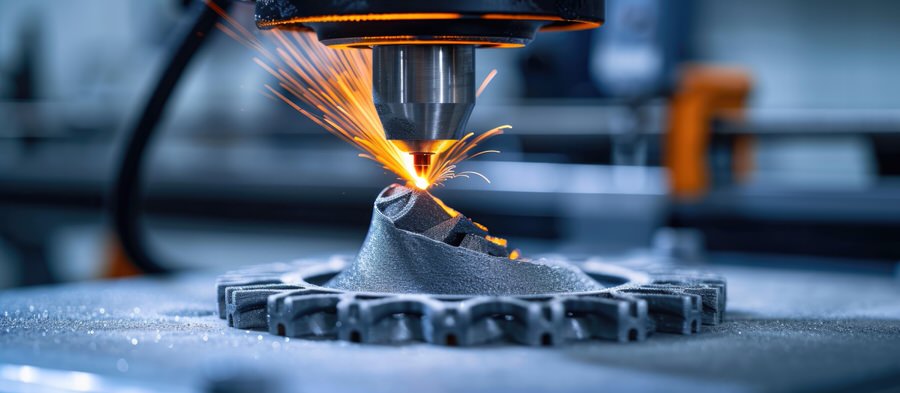The automotive spare parts supply chain has been inefficient for so long that it’s often accepted as “just the way things are.” When a vehicle model retires, the tooling for its spare parts is frequently mothballed or scrapped. If demand suddenly returns, say during a recall, manufacturers can face months of lead time and huge costs just to recreate tooling for a handful of components.
For years, pain points have been accepted as part of the process, treated as unavoidable realities. But that’s starting to change. By 3D printing car parts, Truform is breaking the status quo, helping OEMs produce components on demand and rethink what’s possible in spare parts supply.
The Hidden Costs of Legacy Spare Parts
For car manufacturers, the job doesn't end when the model leaves the showroom - in fact, that’s often when the real challenges begin. Spare parts need to be available for years, sometimes decades, to support routine maintenance, repairs or recalls. Maintaining expensive tooling, stocking thousands of rarely used components and coordinating complex logistics are all part of the norm. Miss a step, and customer satisfaction or regulatory compliance can be at risk.
The strain is especially felt with low-volume or specialised parts. A tiny bracket, trim piece or component for a discontinued model might sit unused for years, yet OEMs must be able to produce it at a moment’s notice. The sheer complexity of keeping the right parts in the right place at the right time has made inefficiency feel inevitable.
Bottlenecks to Breakthroughs: 3D Printing Car Parts
This is where 3D printing steps in, offering a smarter way to manage supply chains. With Truform’s additive manufacturing solutions, spare parts are no longer tied to warehouses full of rarely used components. Instead, manufacturers can produce exactly what’s needed, when it’s needed. Each part begins as a digital file, creating a “digital inventory” that can be accessed anywhere across the supply chain.
Key benefits of 3D printing automotive parts:
- On-demand production: slashes storage costs and material waste
- Faster lead times: no waiting months for tooling recreation
- Lifetime support: older and niche vehicles can be maintained reliably
- Flexible supply chains: parts can be printed across the network
- Environmental wins: fewer obsolete parts scrapped, lower shipping emissions
By embracing 3D printing and the future of automotive supply, OEMs can accelerate their transition from traditional spare parts processes to responsive, efficient production.
How 3D Printing Car Parts Drives Sustainability
3D printing is doing more than changing how spare parts are made - it’s helping supply chains become sustainable. On-demand production reduces material waste, avoids overproduction and cuts emissions associated with transporting components. With fewer obsolete parts scrapped and bulky storage eliminated, operations are becoming leaner and greener.
Sustainability is increasingly tied to regulation, with governments and industry bodies encouraging circular economy practices. 3D printing makes this feasible: worn or legacy parts can be scanned, repaired and recreated without new tooling. For OEMs, the benefits are twofold: a lighter environmental footprint and long-term cost savings, all while meeting customer expectations and regulatory demands.
Truform in Action: Real-World Impact on OEMs
Truform isn’t offering a futuristic concept; OEMs are seeing tangible results today. By scanning legacy parts and storing them digitally, Truform enables manufacturers to print components on demand, cutting lead times from months to days. In practice, this means a service centre can quickly replace a discontinued trim piece or a rare bracket without costly delays. OEMs report lower inventory costs, reduced waste and faster response to recalls, all while keeping vehicles on the road longer. Truform’s approach proves that additive manufacturing isn’t just the future; it’s a practical solution shaking things up right now.
The Road Ahead: What’s Next
The future of additive manufacturing in the automotive industry is bright. More OEMs, including BMW, Daimler, VW and Ford, are testing 3D printed car parts for legacy or low-volume models.
Certified additive manufacturing supply chains are emerging, offering secure file transfers, traceability and intellectual property protection - essential for scaling production while maintaining quality. These advancements are not just technical; they signal a progressive shift in how the industry approaches production, logistics and inventory management.
Looking ahead, 3D printing will integrate more closely with AI and digital twin technology to predict part demand, optimise designs and auto-generate print jobs. This will allow manufacturers to anticipate needs before they arise, minimise manufacturing downtime and respond rapidly to recalls or urgent orders.
Eventually, personalised spare parts, from custom-fit interior components to unique design upgrades, could become standard, creating new opportunities for automotive innovation and customer satisfaction.
Future-Proof Your Spare Parts Supply
Stop letting slow, costly supply chains hold your operations back. With Truform’s on-demand 3D printing solutions, you can produce automotive spare parts faster, reduce inventory waste, and keep vehicles on the road longer. Take the next step - request a quote today and start transforming your spare parts workflow.


